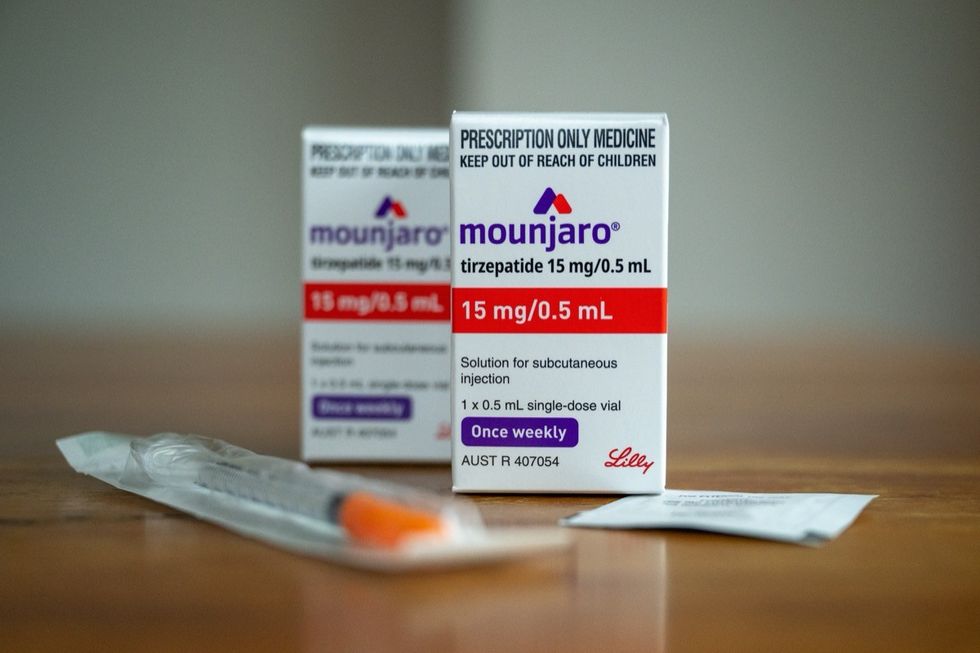Ozempic, one of Novo Nordisk’s brand names for semaglutide injection, is technically only approved for the treatment of type 2 diabetes. Even so, the name has become somewhat synonymous with the weight-loss drug movement overall, naturally spurring some competition. Novo Nordisk itself now manufactures Wegovy, a semaglutide treatment that is approved for weight-loss management, while Eli Lilly makes tirzepatide, which is marketed under the brand names Mounjaro and Zepbound. And while Ozempic may be “all the rage,” the latest results from a trial of tirzepatide show that it may be just as promising for diabetes treatment and weight loss. In fact, patients on the treatment lost up to 23 percent of their body weight.
RELATED: Ozempic Is Not the Most Effective Drug for Weight Loss, New Study Says.
Eli Lilly announced the latest results from the SURMOUNT-1 three-year study on the efficacy of tirzepatide in an Aug. 20 press release. Like semaglutide, tirzepatide targets the glucagon-like peptide-1 (GLP-1) receptor to help regulate appetite and reduce calorie intake. But tirzepatide, which is prescribed as Mounjaro for diabetes and Zepbound for weight loss, targets the gastric inhibitory polypeptide (GIP), too, which is thought to play a role in food intake as well. The medication also stimulates insulin secretion.
Investigators were primarily looking at how effective the treatment is for “long-term weight management” and delaying diabetes progression in adults who were overweight or obese. The trial included 1,032 adults who took tirzepatide over 176 weeks. This was followed by a 17-week off-treatment period.
Results were promising, with those taking 5-mg, 10-mg, and 15-mg weekly injections of tirzepatide losing weight, and those on the highest dose losing 22.9 percent of their body weight on average. Those taking the placebo only lost 2.1 percent by the end of the treatment period. Investigators also found that all doses of tirzepatide “significantly reduced the risk of progression to type 2 diabetes by 94%.”
RELATED: Ozempic Competitor Mounjaro Is Becoming Even More Popular—Here’s Why.
“Obesity is a chronic disease that puts nearly 900 million adults worldwide at an increased risk of other complications such as type 2 diabetes,” JeffEmmick, MD, PhD, senior vice president of product development at Eli Lilly, said in the release. “Tirzepatide reduced the risk of developing type 2 diabetes by 94% and resulted in sustained weight loss over the three-year treatment period. These data reinforce the potential clinical benefits of long-term therapy for people living with obesity and pre-diabetes.”
While those taking 15 mg of tirzepatide lost the most weight, those taking 5 mg of tirzepatide lost 15.4 percent of their body weight, and those taking 10 mg lost 19.9 percent at week 176. However, during the 17-week period where they were no longer taking the medication, patients “began to regain weight and had some increase in progression to type 2 diabetes,” the press release notes.
The latest data on the safety and tolerability of tirzepatide was in line with those previously outlined in the primary analysis, which was published in the New England Journal of Medicine in 2022. Adverse events were primarily gastrointestinal-related and ranged from mild to severe in severity. Patients most commonly reported diarrhea, nausea, constipation, and vomiting.
The latest press release adds that detailed trial results must be submitted to a peer-reviewed journal and will be presented at the ObesityWeek 2024 conference in early November.

